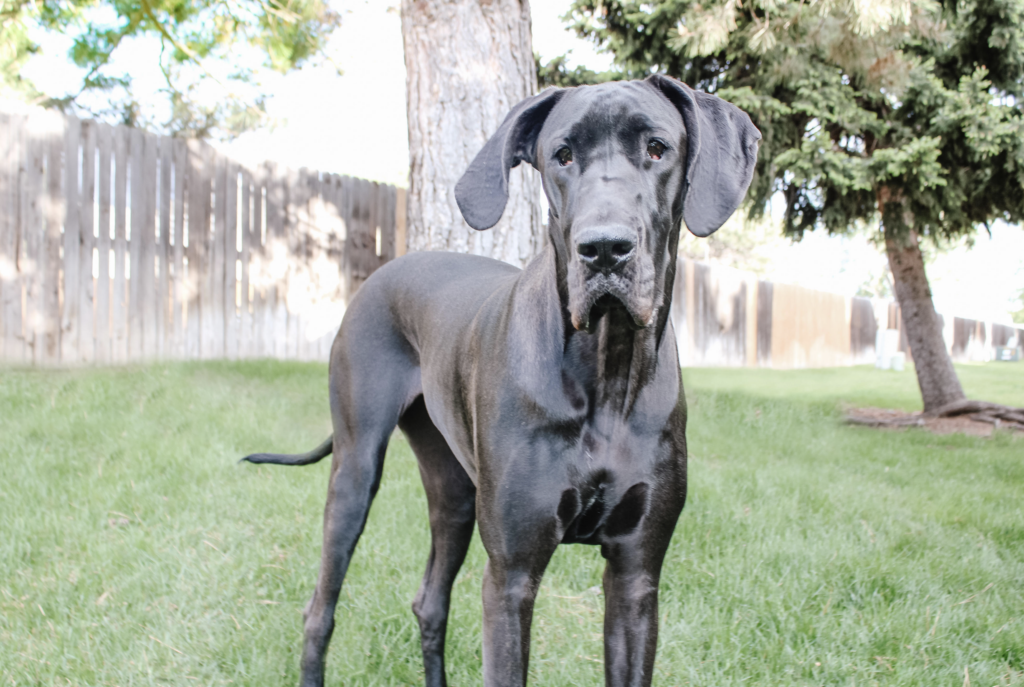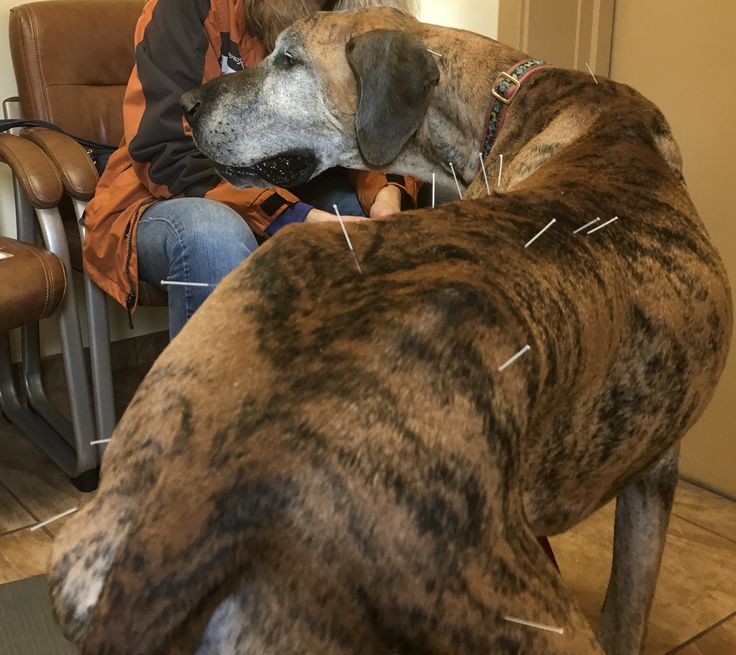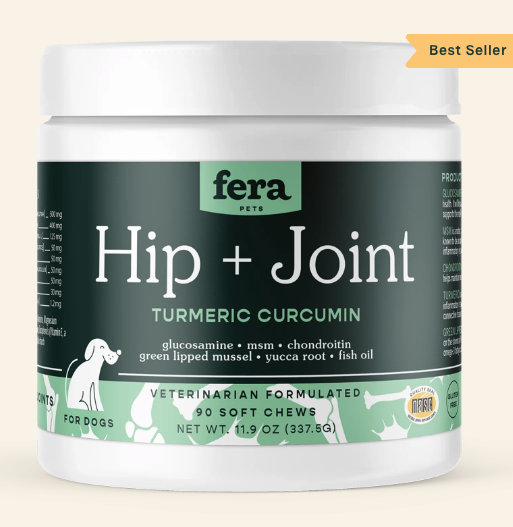All three of my dogs were seen by their veterinarian this week for their annual checkup. One of my dogs is 7 years old, and so the topic of joint support for Great Danes and other dogs was brought up. We had a wonderful discussion that involved several key points I just HAD to bring to the blog and share!
To put this simply, there is a good chance you are spending big money on joint support that is not helping your pet. Not all joint support options are created equal!
So if you are looking for the best joint support for your dog, start here.
- Why some joint supplements are inferior
- How to choose supplements that are safe and effective
- Veterinary recommended joint support for big dogs
- Types of joint supplements to choose from
- Our recommendations
Author’s Note: we talk a LOT about Great Danes and other big dogs on our blog, however, this topic is helpful for all dog owners!

Veterinarian Information about Joint Support for Great Danes
My veterinarian is actually a husband + wife team. They are wonderful and we’ve been seeing (and trusting) them for years. Dr. K has been seeing patients in a clinical setting for decades, and mentioned that he’s been involved with 4 different practices over his career.
He’s seen some things, in other words.
He told me a story about how at one practice, there was no standard protocol for recommending joint support. Each veterinarian would basically throw brand names on the table based on the client’s budget or what they were already using. With time, there became a glaring discrepancy between some dogs.
In the process of watching this play out for many years, he found that some joint supplements were effective, and some weren’t. The key difference is NOTABLE. Check this out:
Consistently, he saw (and still sees) notable improvements in dogs fed joint supplements backed by legitimate trials and research, especially when compared to dogs fed other brands.
He said in many cases, switching to a better brand of joint support can even get some dogs off of Rimadyl and other anti-inflammatory drugs.
One may be inclined to think that all joint support is backed by research and science, but the unfortunate truth here is that many are NOT. You can’t just go by what the bag tells you, either.
Slick marketing doesn’t mean that a company has actually studied the product they are selling.
Read on, friends.
Not All Pet Supplements are Created Equal
Here are some interesting facts about the pet supplement industry:
a. Most joint support options are NOT supported by clinical trials.
b. The supplement industry is largely unregulated, so when you choose brands with no clinical backing, you’re basically stabbing in the dark when it comes to efficacy, bioavailability, and even safety.
This lack of oversight when it comes to the manufacture of pet supplements means that the market is flooded with a myriad of products, varying widely in quality and efficacy.
The absence of standardized guidelines for formulation and testing raises concerns about the consistency and safety of these supplements. While there are some ‘rules’ about making claims on the label, such guidelines are pretty easy to skirt around with good marketing. As pet owners, we are faced with tough decisions!
The brutal truth here is that it’s much less expensive for a company to invest in good marketing and pretty packages than it is for them to invest in dedicated research and stringent quality control.
Consequently, there is a risk of mislabeling, inaccurate dosage information, and even the inclusion of potentially harmful ingredients.

How to Choose the Best Joint Support for Great Danes
After our conversation today, I agree with my veterinarian whole-heartedly!
When it comes to food, supplements, and joint support…are we choosing brands backed by actual clinical research and evidence? Or are we choosing brands because they have good marketing and pretty packages?
This information sent me down a huge rabbit hole of course, but not before I asked him what he felt the best joint support for Great Danes was.
He said overwhelmingly, the ONLY truly safe, effective option where you get your money’s worth is Nutramax Labs.
You’ve probably heard of them, and may even be feeding their supplements! Nutramax makes Cosequin and Dasuquin products.
- Cosequin Hip & Joint Chewable Tablets
- Cosequin Omega 3 Hip & Joint Soft Chews
- Dasuquin Hip & Joint Chewable Tablets
- Dasuquin Joint Soft Chews
- Dasuquin Advanced (Veterinary Formula) Chewable Tablets
- Dasuquin Advanced (Veterinary Formula) Soft Chews
Thankfully, these products are widely available from Chewy, Amazon, and even Costco! For dogs with mobility issues, Dasuquin Advanced has some additional support to minimize damage to cartilage and is available only from the veterinarian.

Dog Joint Support with Clinical Trials
After this discussion with my veterinarian, I had to look into this.
All of us should be alarmed that so many companies are selling us supplements with no actual science behind them! As a matter of fact, I have found that many supplements on the market are packed by factories that make similar products for any brand with enough money to develop a decent marketing plan.
Anybody can put glucosamine into a bottle and say it’s good for our pets. That doesn’t mean it actually is.
I looked into the research done by Nutramax labs and found some incredible things.
For starters, they own and operate their own research and manufacturing facilities. This means that they have control over every step of the process.
They also published this PDF which outlines just some of the intensive research done into their ingredients and the efficacy of their product.
Cosequin Studies by Nutramax Labs
We should expect this same dedication to our pets health with ALL supplements and food choices we make.

Ingredients in Cosequin & Dasuquin
Of course, one may be inclined to read the ingredients in Cosequin and Dasuquin and believe that a more natural or holistic option would be a better choice.
You may be alarmed by the inclusion of scary words such as “natural flavors” and “magnesium stearate”.
Magnesium Stearate is commonly used in vitamins to keep ingredients or tablets from sticking together. It is considered a safe ingredient, especially when given at the extremely low dose offered in joint supplements.
Natural flavors are not harmful. A lot of fear about ingredients in human and pet food comes from toxic diet culture (that’s an interesting rabbit hole if you are every interested in digging into it!).
Make sure that the sources you gain such information from are referencing legitimate science. Pseudoscience and alarmism sells, unfortunately.
The proven, researched active ingredients in Cosequin and Dasuquin products may include:
Glucosamine Hydrochloride
Sodium Chondroitin Sulfate
Methylsulfonylmethane (MSM)
Manganese (Manganese Ascorbate)
Avocado/Soybean Unsaponifiables (ASU) Powder
Green Tea Extract
Each product is slightly different. Dasuquin is the more advanced form of Cosequin and includes additional support (usually for cartilage).

Don’t Waste Your Money on Snake Oil
Holistic influencers like Dr. Karen Becker and Dr. Judy Morgan have made their millions selling untested, unproven supplements and the concept that ‘natural’ is healthier.
Make no mistake. Their online stores are filled with generic products that are co-packed in big factories. There is very little science, research, or trials behind these supplements.
The careful use of words and packaging that appears homemade lead buyers to believe that these choices are wholesome, organic, and better quality.
It’s snake oil and the solid majority of practicing veterinarians will not recommend their products.
How to Find Reputable Pet Food & Supplement Brands
The easiest way to find product recommendations that are backed by research and evidence is to talk to your veterinarian.
They see 100’s of pets every month and know what works, consistently!
You may be inclined to believe that your veterinarian is recommending products because of kickbacks, but that is a dangerous myth. Most of the people who promote that wildly incorrect idea aren’t qualified at all, and may even be practicing veterinary medicine without a license.
Whether we like it or not, a clinically researched food or joint support brand is going to be infinitely safer and healthier for our pets than one that only sounds more ‘wholesome’ on paper.
Veterinarians recommend dog food brands and products that meet their personal standards for safety, efficacy, science, and quality control.

The Best Joint Support for Great Danes
After deep diving into this topic myself, I will now only use and recommend the same joint support that my experienced and highly qualified veterinarian does.
The following options are safe, healthy, and effective for Great Danes and other big dogs:
- Cosequin Hip & Joint Chewable Tablets
- Cosequin Omega 3 Hip & Joint Soft Chews
- Dasuquin Hip & Joint Chewable Tablets
- Dasuquin Joint Soft Chews
- Dasuquin Advanced (Veterinary Formula) Chewable Tablets
- Dasuquin Advanced (Veterinary Formula) Soft Chews
What is the Difference Between Cosequin & Dasuquin
I used to be VERY confused about this myself, so here is the clarification:
Cosequin primarily contains glucosamine and chondroitin sulfate, key components that support joint health by promoting cartilage development and reducing inflammation.
Dasuquin, often considered a more advanced version, incorporates the same foundational ingredients but adds ASU (avocado/soybean unsaponifiables), which is believed to further support joint function and help maintain cartilage.
This addition is thought to provide enhanced anti-inflammatory effects, potentially making Dasuquin a more comprehensive solution for dogs with existing joint issues.
While both supplements aim to improve joint mobility and alleviate discomfort, the inclusion of ASU in Dasuquin represents a notable distinction between the two. Pet owners should consider their dog’s specific needs, the severity of joint problems, and consult with a veterinarian to determine which supplement to purchase.











